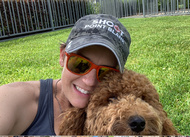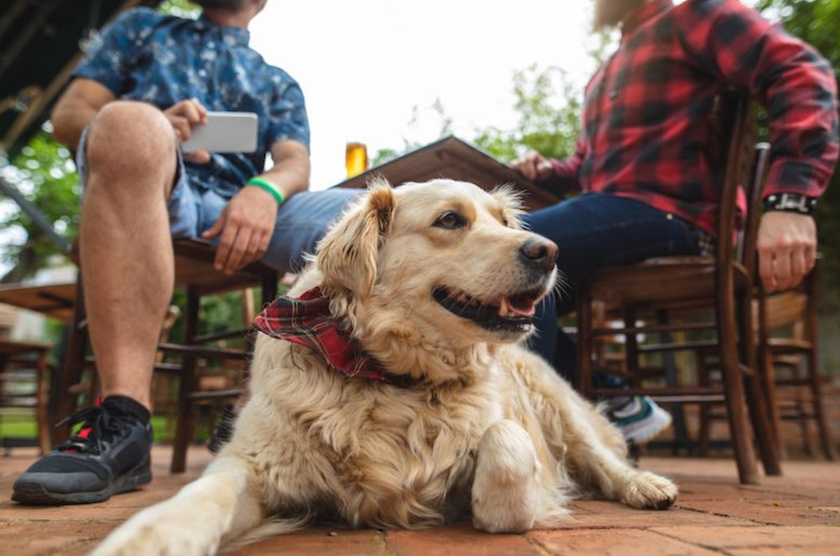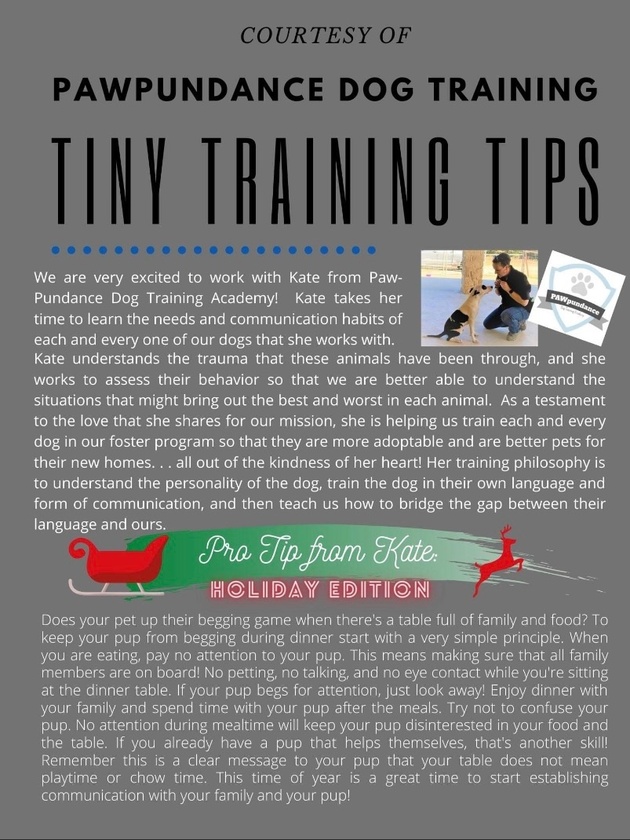
It’s ok! We’re here to help. We speak a little dog and can help translate for both of you. It’s probably just a miscommunication! And we are here to help get you both speaking the same language! Woof!
Connect with the PAWpundance training team and other members of the dog community to discuss better ways to communicate with your furry house guest.
**To get started USE code: TRIAL1month **
Hi @JennyWren! Feel free to email me at [email protected] if you’d rather discuss this privately—I’d love to help!
Understanding Rambo’s Behavior:
First, let’s assess Rambo’s behavior. Does he like to lick you a lot, like spending several minutes licking your hand? Does he lick his paws excessively, even to the point of causing soreness? And how old is he?
Using Puzzles for Separation Anxiety:
Puzzles are a great tool to keep Rambo positively engaged, especially when he’s dealing with separation. To make puzzles effective, start by doing them with Rambo while you’re home. Create a routine where puzzles or snuffle mats are part of your time together. This prevents him from associating the puzzle only with your absence.
Here’s why puzzles are so beneficial: dogs experience the world largely through scent. Smell is central to their sense of self and environment. By working on scent-based activities like puzzles, you help strengthen Rambo’s confidence and sense of the world.
Counter Conditioning and Desensitization (CC&D):
One powerful technique for behavior change is CC&D—Counter Conditioning and Desensitization. This involves gradually changing Rambo’s reaction to a stressor, like being left alone, from fear to calmness. Here’s how it works: if Rambo feels anxious when you leave, keep him just below his anxiety threshold, where he’s slightly tense but not panicking. Then, offer a high-value treat as soon as you start to leave, making the experience more positive. If he’s too anxious to eat, it could mean he’s too close to his threshold. Next time, try stepping away more gradually and offering an even tastier treat. Repeat this gradually, easing Rambo closer to success.
Behavior Adjustment Therapy (BAT):
Another approach is Behavior Adjustment Therapy (BAT), which focuses on teaching Rambo to control his reactions. By combining CC&D with BAT, we reinforce calm behaviors in stressful situations. When Rambo can hold a sit or down, even while slightly anxious, we overlap operant conditioning (learning from consequences) with classical conditioning, creating a powerful behavior shift.
How It Relates to Separation Anxiety and Puzzles:
Using puzzles combines the reward (treats) with the task (puzzle-solving), engaging Rambo through operant conditioning. Begin by “loading” the puzzle: do it with him when you’re home so it’s not only associated with your absence. If Rambo eats kibble, use the puzzle for feeding—it’ll make him look forward to it even more!
Then, start introducing short separations. Begin by leaving the room briefly, and slowly work up to longer absences as his comfort grows. Try timing your separations around how long it takes him to finish a puzzle. Gradually extend the time as he gains confidence.
Encouraging Calm After the Puzzle:
To help Rambo settle, stay with him after the puzzle is done without giving any attention—no touch, talk, or eye contact. Wait until he relaxes on his own. With time, he’ll learn to associate finishing the puzzle with napping or calm behavior. You can have a bone or chew toy ready for him afterward as reinforcement.
Introducing Scent Games and Impulse Control Exercises:
Scent games like hiding treats can be a fun way to challenge Rambo. Start by hiding a treat while he watches, and cue him with “find it” or “search.” Over time, this game can be a go-to when working on separation anxiety.
Impulse control exercises (such as “stay,” “leave it,” and “wait”) teach Rambo to pause and think before reacting. Start with low-value treats, gradually increasing both the treat value and level of distraction. Build in duration first, then add distance and complexity to the task. Teaching him to wait calmly before reacting strengthens his ability to cope with stress.
Ultimately, you’re helping Rambo learn patience, self-control, and confidence, moving toward a balanced, healthy attachment. Let me know if you have questions—I’m here to help!
Welcome to PAWpundance Dog Training Academy on Locals.com!
We’re thrilled that you’ve joined our community! PAWpundance is a place for positive, dog-loving people to come together, share experiences, and help each other grow. Locals offers an “ad-free experience,” so even a small contribution helps support our tech and keeps our community thriving.
We want to see your furbabies!
We’re here to assist with any questions you may have about training, behavior, and more. At PAWpundance, we believe in blending knowledge with a bit of fun—expect plenty of paws, puns, and maybe even a dance or two! Together, let’s enjoy some laughs and build stronger relationships with our pups.
Our Philosophy:
We’ve invited another species to live in our homes, and our dogs are much more than accessories; they’re our guests. They don’t speak our language, and like in the movie E.T., we don’t want to be the intimidating figures trying to coerce a scared, confused being. Instead, we want to be like ...
Eye Contact, Eye Contact, Eye Contact!
Reward every glance. Start by reinforcing brief glances, then encourage your pup to hold your gaze a bit longer. Gradually phase out your part of the eye contact—your pup will learn to watch you and adapt to your movements naturally. This approach helps them learn to walk with you without relying on leash cues.
Remember, the leash is purely for safety—not for communication.
Take a look at this video with Meghan and Buckee. Buckee is watching Meghan closely, and she rewards him by making eye contact, smiling, and offering treats. Meghan also looks forward occasionally, teaching Buckee to walk with her in sync.
Notice that Buckee is a reactive pup, so the leash is essential for safety, especially if he responds to something unexpectedly. However, it’s only used for physical control when necessary. When Buckee refocuses, Meghan reestablishes instructional control, and they continue their walk together. She does a fantastic job of engaging with him! In ...
Loose-Leash Walking Tip:
Where you reward makes a big difference! Try using the hand on the same side as your dog when giving treats or praise.
When you reach across your body to reward with the opposite hand, it draws your dog’s nose in front of you, encouraging them to move ahead and potentially start pulling.
In the video of Meghan and Domino, Meghan holds the leash with her left hand while Domino walks on her right. She rewards him by petting and giving treats with her right hand. This keeps Domino walking by her side on a loose leash, rather than in front, pulling her along.
Next time you’re out walking with your pup, try rewarding with the hand on the same side as your dog.
https://twitter.com/wholedogjournal/status/1295508215740932098?s=21
How to teach you pup to be a good dining companion! What a great skill!

https://twitter.com/wholedogjournal/status/1292609106637987840?s=21
This is about counter-surfers, but I love the description of trying to shame dogs. This author, Pat Miller helped me understand this concept in her book the Power of Positive Dog Training.
If you’re still on Twitter, the Whole Dog Journal is a great group to follow. Lots of fantastic info!













